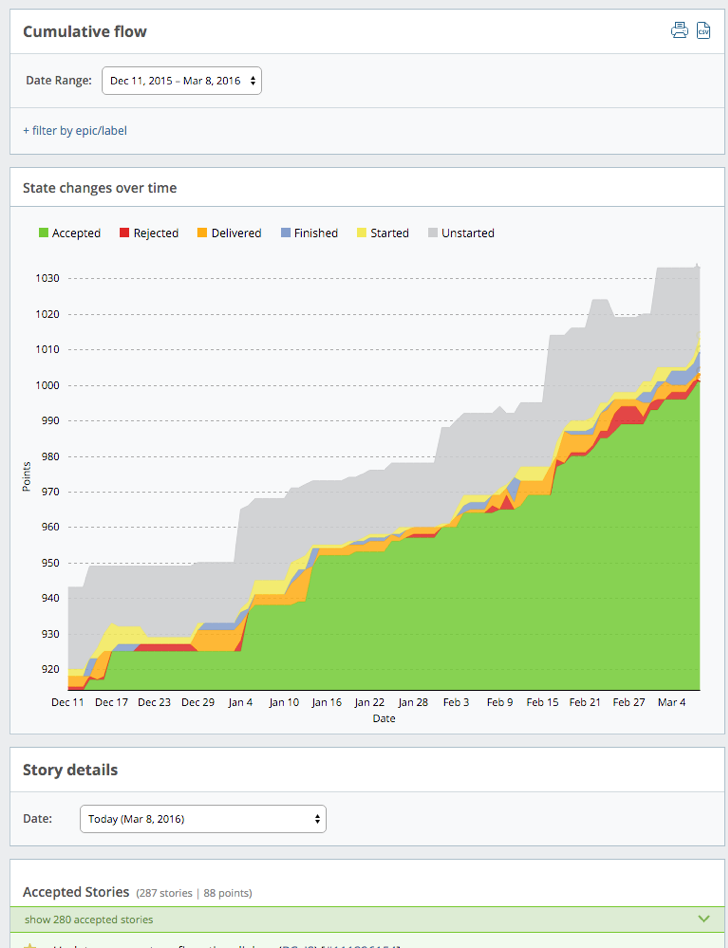The Cumulative Flow chart is a robust tool for analyzing project trends. It shows how stories have changed state over time, when more stories were in a particular state relative to others, and when new stories were added. It’s effectively a Burnup chart with more states visible.

The Cumulative Flow chart shows a breakdown of stories in each state for each day of a selected reporting period. There are several things you can do with this chart:
-
Track progress. An upward trend of accepted points indicates progress toward a goal; a flat trend might indicate stalled progress.
-
Manage scope. A large increase in unstarted stories may indicate new stories being added to the iteration or project; this could indicate scope creep.
-
Identify bottlenecks. Look out for more stories being started than can be completed in an iteration. Too much work in progress may reveal struggles such as blocked stories or switching focus too frequently. A large increase in delivered stories may also indicate a testing or acceptance bottleneck.
Using this chart
Click the Cumulative Flow tab on the Project Overview chart, then click view report to select the date range and filtering options for the report.
Choose different time periods with the following Date Range menu items:
-
Past 14 days
-
Past 30 days
-
Past three months
-
Custom date range (within the last six months)
When you first view the chart, it defaults to the past 90 days.
To see the data for just an epic or label, click + filter by epic/label, type the first few letters of the epic or label name, and then select the one you want. One epic/label filter can be applied at a time, allowing you to drill down into a specific feature.
Mouse over the chart to reveal the number of points accepted and scoped on each date.
To see story activity for any day within the last six months, choose a Date for the Story Details report.
Mouse over initials to see someone’s full name, and click the story ID to open the full-page view of that story.